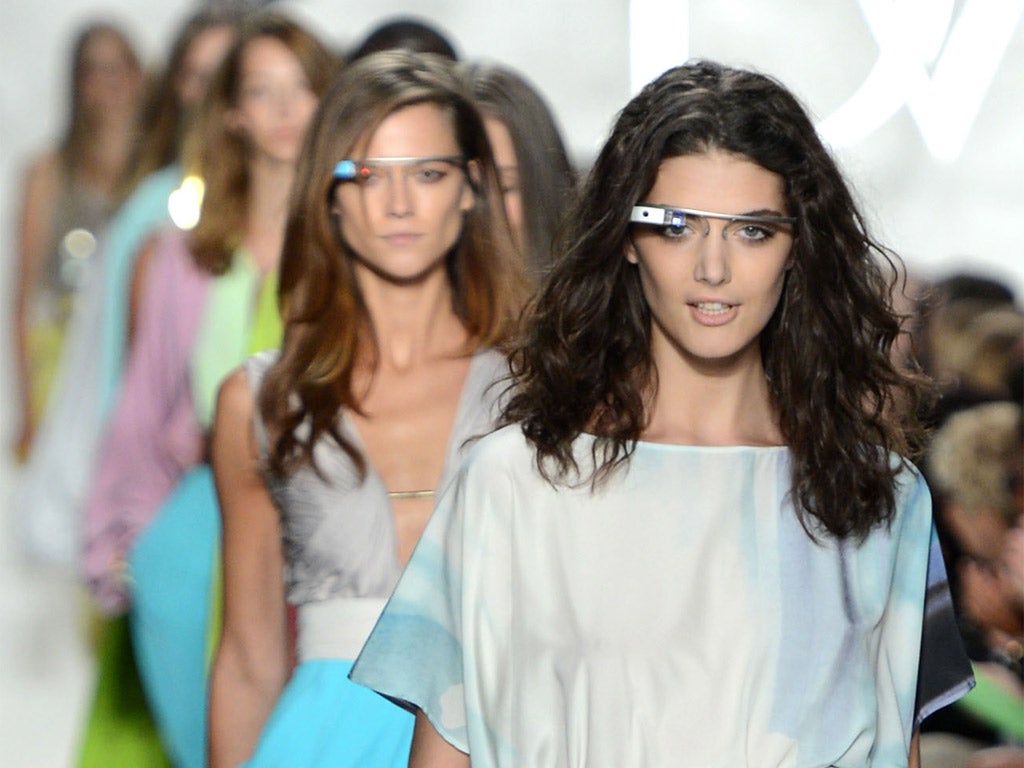Why Angela Ahrendts to Apples is a natural move: Tech form now matters as much as tech function
Geek and chic finally become bedfellows on the catwalk

The dance between technology and fashion has always been a rather ungainly one, characterised by awkward stumbling, accidental toe-treading and unexpected knees in the groin.
Neither world is really certain what it’s supposed to be doing with the other. Products deemed to combine style with cutting-edge credibility tend to leave the public cold, whether that’s a celebrity-endorsed gizmo (will.i.am’s iPhone accessories, Polaroid camera glasses sported by Lady Gaga) or solutions to problems that don’t exist (Bluetooth glove-phones, rechargeable handbag chargers). But as technology shrinks, form and style start to become much more important.
In the old days, technology companies could chuck components in a black rectangular box, slap on a product code and launch it. Today you can get a 32-bit processor, flash memory, RAM and a clock in a chip less than two millimetres square; this has driven a mobile revolution that’s spreading from handheld devices to wearables. And wearables present technology companies with a problem, because gadgets that we’re happy to have sitting in our bags or on our shelves aren’t necessarily ones we’d have on our wrist, round our neck or on our face. Suddenly, technology finds itself experiencing a fashion crisis.
“You welcome gimmicks from your phone,” says Carrie Tyler, editor of online fashion glossy Never Underdressed, “but you don’t necessarily want gimmicks from your watch or your glasses. You just want them to look attractive and work.”
The fanfare heralding the arrival of wearable technology into the marketplace has been muted by this evident truth. There’s little point in making wearables that people don’t find alluring enough to wear, and while technology companies tie themselves up in knots over the functionality of, say, a smartwatch (Track your sleeping patterns? Take pictures? Monitor heart rate? Tell the time?) the fact is that we require very little from a watch. For most people, aesthetic appeal is more important. That’s why a team of 100 designers is rumoured to be working on Apple’s much-anticipated “iWatch”: while the mass adoption of wearable technology is primarily a social battle, it’s one that can be won a whole lot quicker if the product looks cool and feels desirable.
Small wonder, then, that technology companies are beginning to court figures from the fashion world like desperate singletons at a speed-dating event. The departure of Burberry’s Angela Ahrendts for a job at Apple comes only a few weeks after Yves St Laurent’s Paul Deneve made the same move. Google, still engaged in a long-term pre-launch battle for public acceptance for Google Glass, scored a coup when Diane von Furstenberg’s models wore the futuristic spectacles at last autumn’s New York Fashion Week. Samsung sent Galaxy Gears watches up the catwalk in Milan with Moschino; Kenzo designed covers for Google’s Nexus 7 tablet at Paris Fashion Week, while those on the front row at Roksanda Ilincic’s recent show in London were slipped a free pair of stylish Sennheiser Momentum headphones. With the attitudes of taste-makers so important in the often sniffy world of fashion, you can hardly blame those technology companies who suddenly find themselves plunged into the luxury accessories market for attempting such overt seduction.
But what do the fashion companies get out of this liaison? Does any kudos flow the other way? “The fashion and beauty worlds were very slow to the digital party,” says Tyler. “Until a couple of years ago there were barely any decent e-commerce websites, and luxury brands were in denial about what technology could do for them – mainly because they were steeped in heritage. But that’s changing.
“You may not be able to buy Prada online, but they now embrace digital with all their wonderful videos and associations with the art world.”
That developing link with technology was highlighted at Dressed To Code, a “fashion hackathon” hosted by Glamour magazine last month at New York Fashion Week, where coders (split 50/50 between men and women) convened to merge the worlds of technology and fashion through the development of mobile apps. It’s hardly a marriage made in heaven, but perhaps the geek and the chic are finally getting it together.
Subscribe to Independent Premium to bookmark this article
Want to bookmark your favourite articles and stories to read or reference later? Start your Independent Premium subscription today.

Join our commenting forum
Join thought-provoking conversations, follow other Independent readers and see their replies